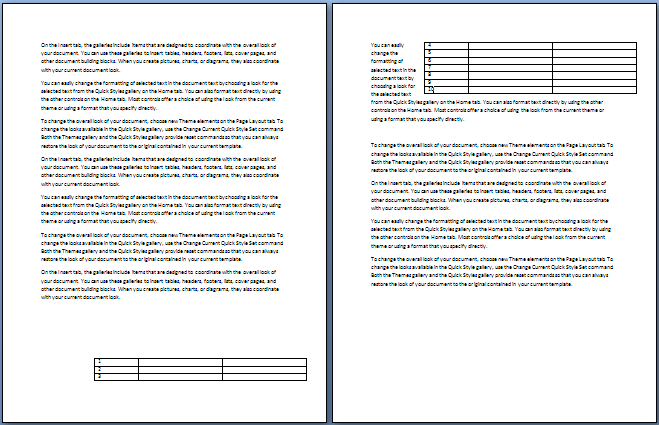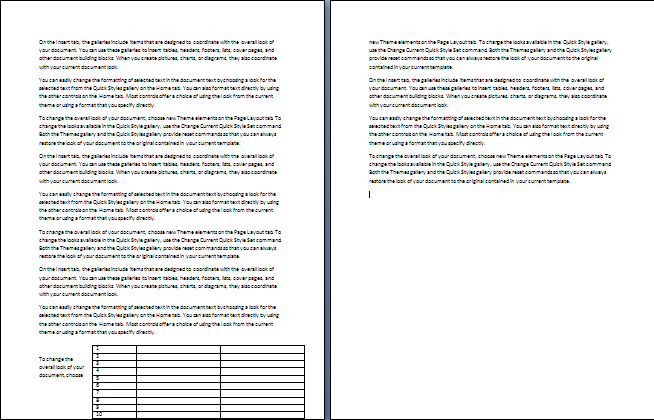doNotBreakWrappedTables (Do Not Allow Floating Tables To Break Across Pages)
This element specifies whether applications shall allow tables which have been set to floating using the tblpPr element (§2.4.54) shall be allowed to break across multiple pages when needed.
Typically, a table whose contents cannot all be displayed on one page is broken as needed across multiple pages in order to preserve the location of the table (just as a paragraph of multiple lines is broken across pages as needed). This element, when present with a val attribute value of true (or equivalent), specifies that floating tables shall never be broken across pages, and shall instead be put on the first page by adjusting the starting position of the table as needed to fit on that single page.
[Example: Consider a WordprocessingML document with a floating table positioned at the bottom of a page , as follows:

The default presentation of this document results in that table being broken across two pages of content.
However, if this compatibility setting is turned on:
<w:compat>
<w:dontBreakWrappedTables />
</w:compat>
Then that table is not broken across the page boundary, so it must be moved further up on the first page to accommodate its entire size, resulting in the following output:

Notice that the table now flows into the page margins in order to keep it on one page. end example]
|
Parent Elements |
|
compat (§2.15.3.9) |
|
Attributes |
Description |
|
val (On/Off Value) |
Specifies a binary value for the property defined by the parent XML element.
A value of on, 1, or true specifies that the property shall be explicitly applied. This is the default value for this attribute, and is implied when the parent element is present, but this attribute is omitted.
A value of off, 0, or false specifies that the property shall be explicitly turned off.
[Example: For example, consider the following on/off property:
<w:… w:val="off"/>
The val attribute explicitly declares that the property is turned off. end example]
The possible values for this attribute are defined by the ST_OnOff simple type (§2.18.67). |
The following XML Schema fragment defines the contents of this element:
<complexType name="CT_OnOff">
<attribute name="val" type="ST_OnOff"/>
</complexType>